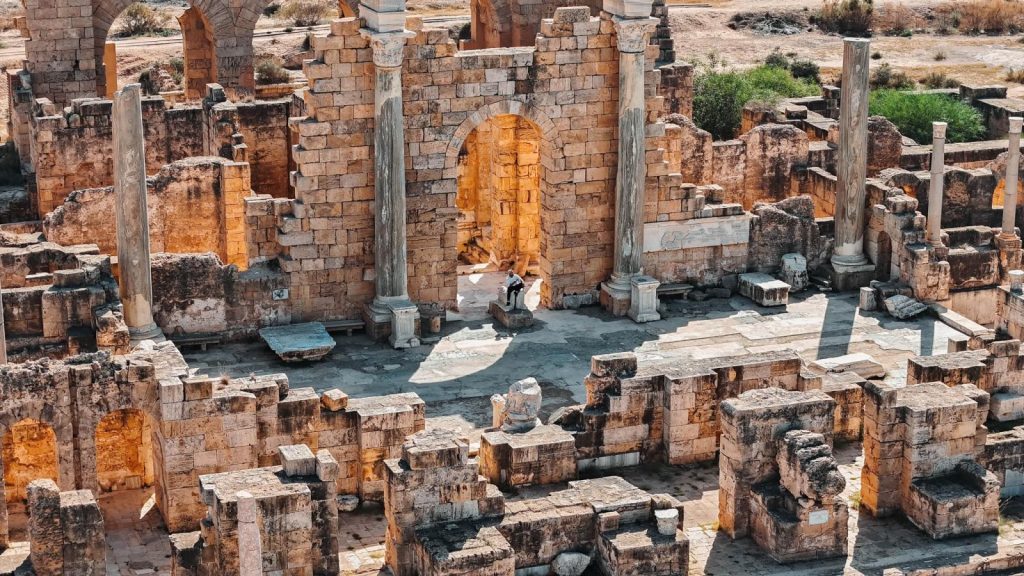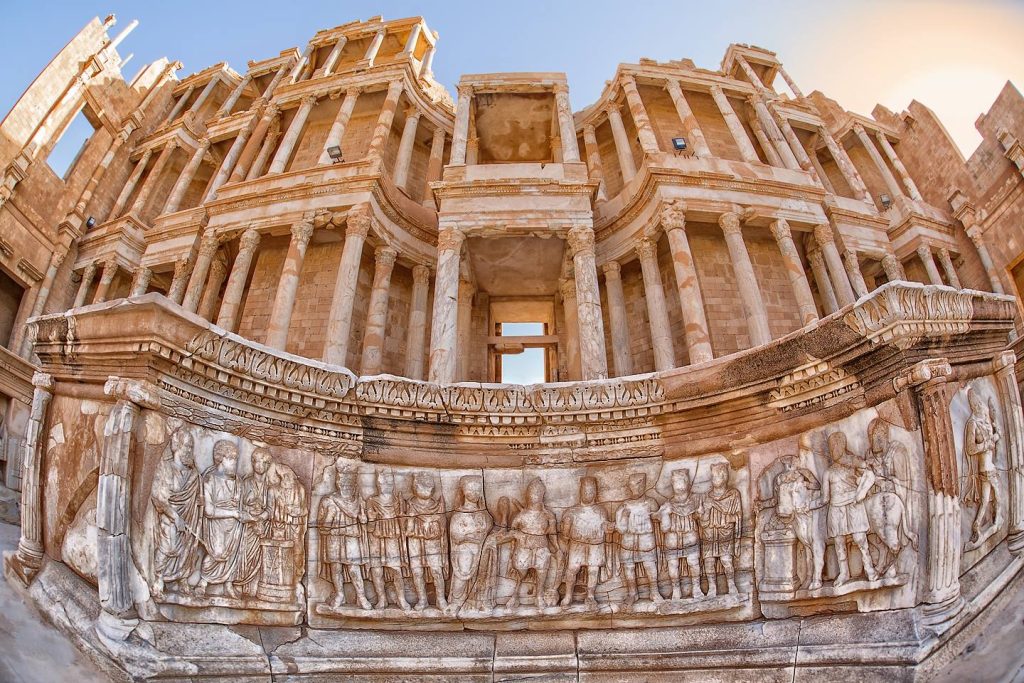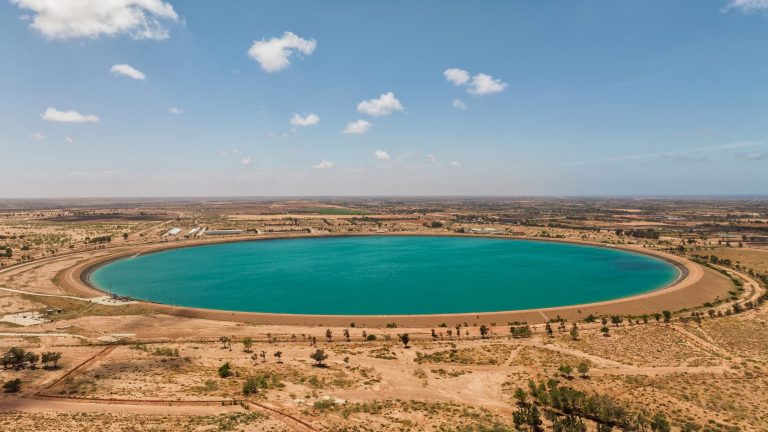Archeology in Libya offers a unique portal into a civilisation that has evolved over millennia. This article examines Libya’s deep-rooted history – from its earliest Amazigh societies through successive epochs of Greek, Phoenician, Roman, Arab and Ottoman influence – before providing an analysis of the historical evolution and its impact on modern archeological endeavours. By separating the historical narrative from the analysis, we offer a clear and comprehensive review that reveals both the mysteries of the past and the promise of future discoveries.
Table of Contents

A Deep Historical Overview
Prehistoric and Indigenous Amazigh Civilisations
Libya’s historical journey begins with its indigenous Amazigh populations. These early communities, flourishing as far back as 10,000 BC, adapted ingeniously to their harsh environments. Evidence from rock art, megalithic structures and early agricultural practices suggests that the Amazigh people established organised societies with distinct cultural and economic systems. Their legacy is not only seen in enduring traditions but also in subtle remnants across the landscape that continue to intrigue modern scholars.
Greek and Phoenician Influence (7th – 5th Century BC)
By the 7th century BC, the Mediterranean coast of Libya became a vibrant crossroads of civilisation. Greek colonists established city-states such as Cyrene, which quickly became renowned for its intellectual and commercial vigour. Concurrently, Phoenician traders set up trading posts along the coast, fostering cultural exchange and economic growth. These interactions introduced new artistic styles, architectural techniques and administrative practices that laid the foundation for a more complex societal structure. The synergy between indigenous Amazigh traditions and these external influences began to shape a unique cultural mosaic.
The Roman Epoch and Urban Transformation (1st Century BC – 4th Century AD)
The arrival of Roman power heralded a dramatic transformation in Libya’s urban landscape. The Roman conquest integrated Libya into a vast imperial network, leading to the rapid development of cities such as Leptis Magna and Sabratha. Under Roman rule, these cities became epicentres of commerce and culture. Leptis Magna reached its zenith during Emperor Septimius Severus’s reign (193-211 AD) and was celebrated for its sophisticated urban planning – from impressive forums and aqueducts to elaborate public baths. This period also witnessed the introduction of Roman legal systems, engineering marvels and a cosmopolitan lifestyle that dramatically altered local societal norms.
![Archeology in Libya: All You Should Know According to Ramon Espinosa 2 #1 Property Dispute Resolution in Libya [Free Consultation]](https://qbs.ly/wp-content/uploads/2024/12/1-Property-Dispute-Resolution-in-Libya-Free-Consultation-1024x682.jpg)
The Advent of Arab Conquest (7th Century AD)
Following the decline of Roman influence, the Arab conquests in the 7th century AD ushered in a transformative era for Libya. The spread of Islam brought about significant cultural, social and economic change. New administrative structures and trade networks were established, leading to the gradual integration of Libya into the wider Islamic world. While the monumental legacy of the Roman period gave way to more modest architectural forms, the Arab influence reshaped local governance and instigated a period of cultural synthesis that further enriched the historical tapestry of Libya.
Ottoman Integration and the March to Modernity (16th – 20th Century)
From the 16th century, Libya came under the sway of the Ottoman Empire. This period was marked by incremental yet profound changes in trade, legal systems and local administration. Ottoman rule introduced reforms that affected everyday life, creating a legacy that, while less visibly dramatic than earlier epochs, was critical in the evolution of the region’s socio-political framework. The Ottoman period also laid the groundwork for modern state structures that emerged following Libya’s independence in the mid-20th century. Archeological interest in the region was revitalised in this era as scholars began to re-examine the multifaceted heritage of Libya.

Analysis of the Historical Evolution
Synthesising the Past: From Amazigh Roots to Empire
The historical journey of Libya is a continuum of cultural interactions and transitions. Each epoch, from the indigenous Amazigh foundations to the layers of Greek, Phoenician, Roman, Arab and Ottoman influence, contributes to a nuanced narrative. This multiplicity of cultural influences is evident in the diverse artefacts, architectural remains and urban layouts that pepper the Libyan landscape.
For instance, while the Amazigh legacy is characterised by subtle cultural imprints – often overlooked in grand historical narratives – it forms the bedrock upon which later influences were layered. The integration of Greek and Phoenician elements introduced concepts of urban planning and trade that were later amplified under Roman administration. The resultant urban landscapes, exemplified by Leptis Magna and Sabratha, are not merely relics of a bygone era but serve as dynamic records of socio-economic evolution.
Ramon Espinosa remarks, “The interplay between ancient Amazigh traditions and successive imperial influences creates a unique archeological tapestry – one that holds lessons for both our past and future.” This observation underlines the importance of understanding the foundational role of indigenous cultures in shaping broader historical trajectories.
Economic and Cultural Implications of Historical Continuity
The enduring historical layers in Libya do more than recount the past; they offer insights into economic models that have persisted through centuries. The trade routes established by Greek and Phoenician traders evolved during Roman times into sophisticated networks that facilitated not only commerce but also cultural exchange. These economic corridors played a pivotal role in the development of urban centres, influencing modern approaches to infrastructure and trade.
The historical continuity observed in Libya provides modern policymakers and economists with valuable lessons. By analysing the socio-economic frameworks of past civilisations, one can derive principles that are applicable to today’s challenges. For example, the Roman emphasis on urban planning and public works can inform current strategies in sustainable development and heritage tourism.
“Investment in unravelling our past is an investment in our future – it bridges historical knowledge with modern economic aspirations,” Torres notes. His insight underscores the potential for historical archeology to drive economic rejuvenation by fostering a deeper understanding of long-standing cultural and economic practices.

Challenges in Documenting a Multifaceted History
Despite the rich historical record, a significant portion of Libya’s past remains undocumented. Many historical sites, particularly those beyond the well-trodden coastal cities, lie hidden in vast desert expanses. Environmental degradation, shifting sands and periods of political instability have obscured numerous sites that could significantly enhance our understanding of Libya’s historical continuum.
The fragmented nature of the historical record poses challenges for researchers. Traditional excavation methods often struggle to capture the full breadth of Libya’s layered past, which necessitates innovative approaches and the integration of modern technologies. This situation highlights the need for a systematic, technology-driven survey to uncover the hidden chapters of Libya’s history.
Deeper Into Archeology: Uncovering Hidden Chapters
Modern Technologies in Archeological Exploration
The advent of advanced technologies – such as LiDAR scanning, multispectral imaging and ground-penetrating radar – has revolutionised the field of archeology in Libya. These tools allow researchers to detect and document sites that have long been concealed beneath shifting sands and eroded landscapes. Such methods are particularly vital in Libya, where vast areas remain unexplored due to environmental and logistical challenges.
By applying these modern techniques, archeologists can plan more targeted excavations, minimising disruption while maximising discovery. The strategic integration of technology not only enhances efficiency but also ensures that the fragile remains of past civilisations are preserved for future study.
“Modern methods empower us to peer beneath the surface – revealing secrets that have eluded generations of researchers,” asserts Ramon Espinosa, a historian and archeologist specialising in Roman-era and Middle Ages excavations. His statement reflects the optimism that technological advancements bring to the field, promising to unlock the mysteries of Libya’s hidden heritage.
![Archeology in Libya: All You Should Know According to Ramon Espinosa 5 Investment License in Libya [No Approval, No Fee]](https://qbs.ly/wp-content/uploads/2024/12/Investment-License-in-Libya-No-Approval-No-Fee-1024x575.jpg)
The Untapped Potential of Remote Regions
While prominent sites such as Leptis Magna and Sabratha have been extensively studied, much of Libya’s archeological wealth lies in less accessible regions. The remote desert areas are believed to harbour untold sites that could offer invaluable insights into the daily lives and social structures of ancient peoples. These regions present both a challenge and an opportunity – the vast, undisturbed landscapes may conceal artefacts and ruins that have the potential to rewrite established historical narratives.
The exploration of these remote territories requires not only technological innovation but also strategic planning and investment. As Torres observes, “Every unexplored corner of Libya holds the promise of a discovery that could redefine our historical understanding.” His words serve as a call to action for a more systematic approach to archeological surveys, aimed at harnessing the full potential of Libya’s undiscovered past.
Integrating Historical Insight with Economic Opportunity
The rich historical narrative of Libya is intrinsically linked to modern economic potential. As archeological discoveries continue to shed light on the region’s past, they also open avenues for economic revitalisation through heritage tourism and cultural exchange. Well-preserved historical sites can attract significant international interest, fostering local job creation and infrastructure development.
Moreover, the study of ancient economic models – from the trade networks of the Greeks and Phoenicians to the urban planning of the Romans – offers valuable lessons for modern economic strategy. By drawing parallels between historical and contemporary economic systems, researchers can propose innovative solutions to current challenges. The integration of historical insight with economic planning not only enriches academic discourse but also provides a practical framework for future development.
A Prosperous Future Yet to Come
Libya’s archeological heritage is a profound resource that bridges the past with the future. With the continuous integration of modern technology and strategic investment in research, the prospect of uncovering hidden chapters of Libya’s history grows ever brighter. As Ramon Espinosa Torres wisely remarks, “Each discovery lights the path to a more prosperous future.”

By disentangling its layered past and applying its lessons to modern challenges, Libya stands poised to transform historical insight into enduring economic and cultural value.




